TAPS 2019 projects
The main component of the summer program is an active participation in the selected astrophysics / physics research project offered by the staff members of the Nicolaus Copernicus University, please see the topics and their descriptions below. Interested students are welcome to contact possible advisors for more details concerning the foreseen projects and discuss the dates that the project could be undertaken.
Astrophysics:
Physics:
Star Formation in the outer Galaxy
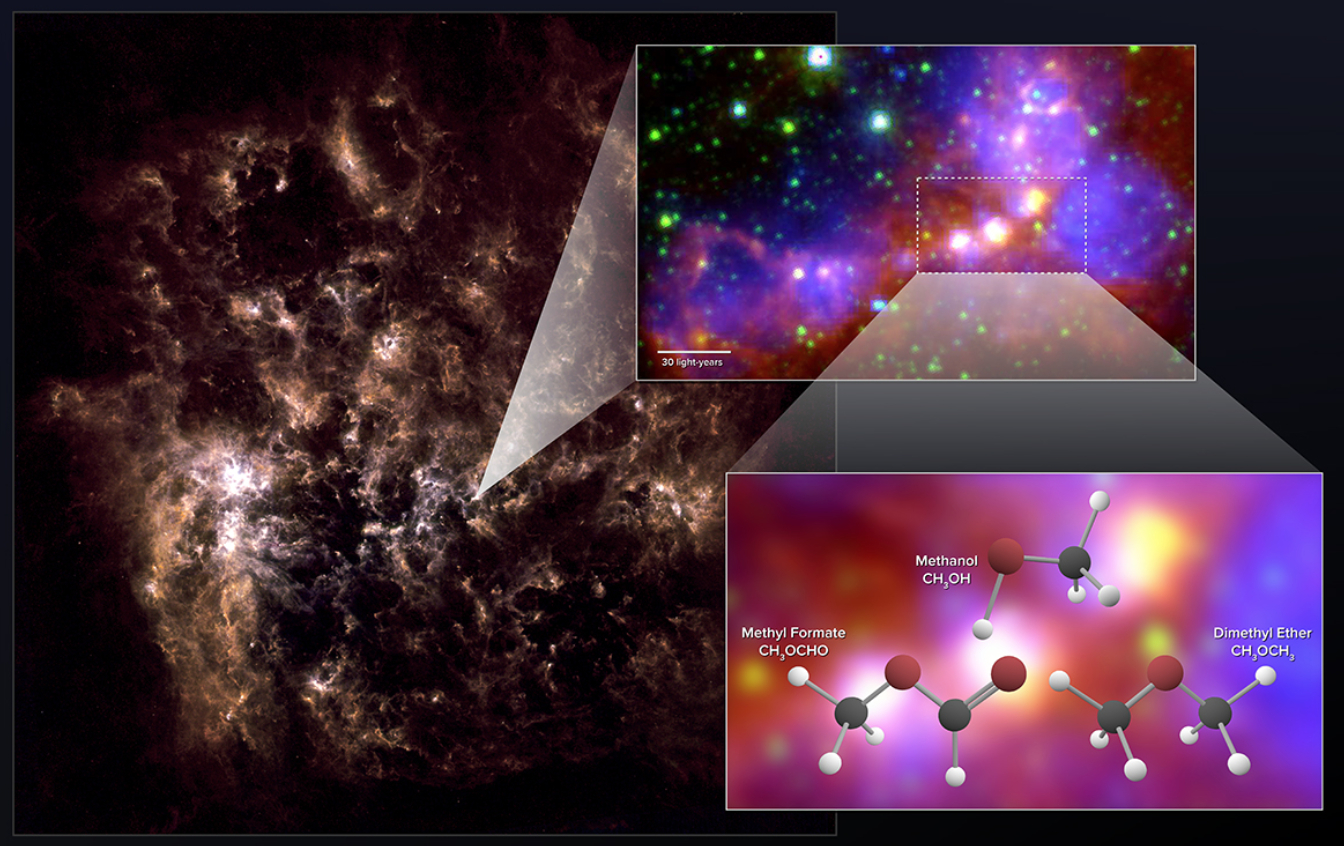
Stars form in dense molecular clouds and are accompanied by several physical processes, e.g. the collapse of the envelope, ejections of outflows etc. Star-forming regions forming Solar-type stars are well studied only in the immediate vicinity of the Sun due to the limitations of the observations. At the same time, star formation in more distant regions may reveal possible effects of environment (e.g. low metallicity) and provide insights about how stars formed in the early Universe.
The student will have an opportunity to join the MA-LAB@Toruń and learn the data analysis and interpretation of spectra obtained towards star forming regions in the outer Galaxy. Our team uses spectroscopic observations from near-infrared to radio wavelengths obtained using e.g. KMOS at VLT, SpeX at NASA IRTF, PI230 at APEX, and RT4 in Piwnice near Toruń.
| Supervisor: | Agata Karska (agata.karska[at]umk.pl) |
| Co-supervisors: | Alya Azman, Ngân Lê |
| Time: | July |
^ ^ ^ ^ ^
Star formation rate density in distant Universe
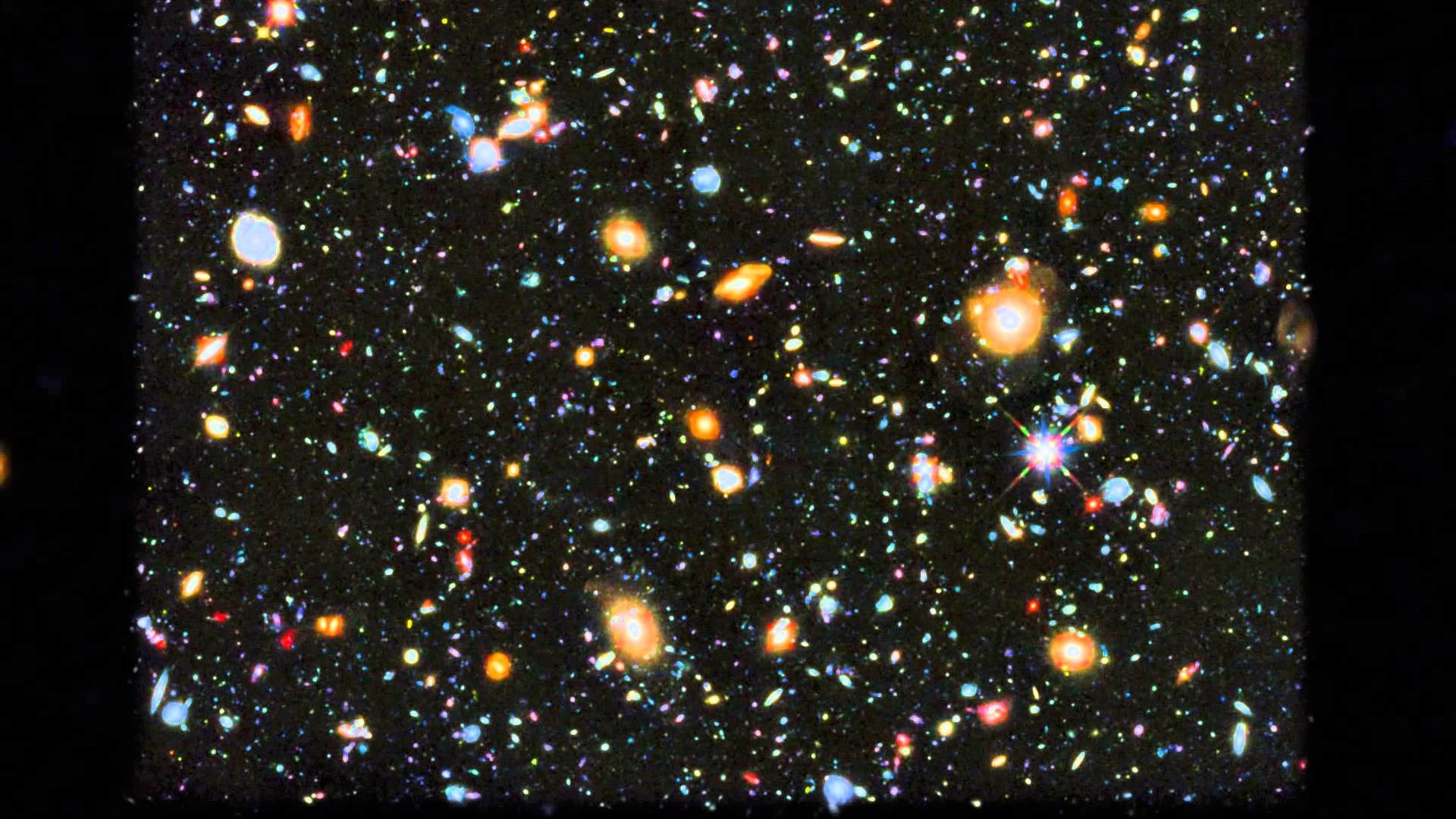
Measuring the star formation rate density, ie. the efficiency with which the stars are being formed in distant Universe, is a very challenging process. While in the rest-frame ultraviolet wavelengths (sensitive to most massive, young stars) the images are relatively deep and reach out to redshifts as high as 10 (about 13 billion years back in time), in the infrared (tracing the dust emission) the situation is much worse. In order to remedy this, the student involved in this project will use a huge sample of distant galaxies to increase the sensitivity of the infrared images by applying a statistical process of image stacking, reaching cosmic distances unattainable before.
During this project student will gain experience in programming in Python language, which will be used for data analysis, astronomical images processing, as well as plot generation. The broad-band photometry, collected by world-class telescopes (eg. CFHT, Subaru, Spitzer, Herschel, JCMT, ALMA), will be used in order to find basic physical properties of galaxies, like stellar masses or star formation rates. Finally, the student will learn how to use and interpret the astrophysical images in order to discover how many stars have been formed in the Universe billions of years ago.
^ ^ ^ ^ ^
Diffuse matter in OB stellar associations
The term ''OB associations'' appeared in the literature in 1930-ties, published by V.A. Ambartsumian. The objects are groups of very hot and bright stars. Since the latter evolve very quickly (they are massive objects) the OB associations must have been formed very recently -- they mark the galactic star forming regions. The spiral structure is imposed on the interstellar medium -- not on stars. The latter escape from their birthplaces with time. Thus it is very important from the point of view of the structure of our Galaxy to investigate the localizations and physical structure of OB associations. Very young stars are still embedded in the remnants of their parent clouds; star forming processes are never 100% efficient. This diffuse matter should evolve very quickly being heavily irradiated by the newly formed luminous stars. The project concerns two tasks: a determination of distances to OB associations (there are several methods, including the recently published Gaia DR2) and it seems important to make them more or less identical, also it is important to analyze interstellar features in OB associations' members. The latter may tell us something important about the evolution of diffuse matter inside young stellar aggregates. Naturally, it is not possible to analyze all known OB associations; the project may concern 2 - 3 representative ones. The project should lead to a refereed publication.
^ ^ ^ ^ ^
Calibration of the polarimeter at the TSC90
The project aim is to calibrate the polarimeter based on the two Savart plates. The two Savart plates are mounted on the filter wheel integrated with the CCD SBIG camera STL 110000M on the 0.9-m Schmidt-Cassegrain telescope (TSC90). TSC90 is one of the telescopes at the Centre for Astronomy of the Nicolaus Copernicus University in Toruń. The observatory is located 15 km to the North from Toruń. The successful applicant will perform photopolarimetric observations, data analysis and calibration of the polarimeter. The calibration will be based on the observations of zero polarized and highly polarized standard stars. During the project, the scientific data will be taken as well and analyzed with used of the delivered calibration parameters. Interest in the optical observations, data processing and good programming skills are required.
^ ^ ^ ^ ^
Assembly of 0.35-m telescope at the Centre for Astronomy NCU
The project aim is to assemble the 0.35-m telescope to conduct photometric observations. The installation will take place in the second dome of the observatory in the Centre of Astronomy of the Nicolaus Copernicus University in Toruń. The observatory is located 15 km to the North from Toruń. The telescope will be mounted on the 10 Micron GM 4000 mount, together with the CCD SBIG STL-1001E camera. The successful applicant should be interested in the optical astronomical hardware, software, as well as willing to perform the observations and test the assembled telescope and the accuracy of the GM 4000 mount. The experience in astronomical observations is strongly required.
^ ^ ^ ^ ^
Characterization of AlAs/GaAs superlattices using photothermal infrared radiometry
In this project a contactless method will be worked out for thermal properties characterization (thermal conductivity, thermal diffusivity, thermal boundary resistance) of the superlattice systems. The method will be applied to AlAs/GaAs superlattices to investigate the interface effects on the thermal transport properties. In the frame of the stay, the student will be involved in Matlab programming of the photothermal infrared radiometry system. Thus a necessary basic of Matlab programming is required.
| Supervisor: | Michał Pawlak (mpawlak[at]fizyka.umk.pl) |
| Time: | 1 July – 31 July |
^ ^ ^ ^ ^
Collisions in ultracold gases of complex atoms
Nearly 30 years passed since the first successful production of samples of ultracold atoms. Since then many advances were introduced into the field: atoms with more complex structure were laser-cooled, and more recently - molecules. In this project, we will focus on cold collisions of atoms with a complex structure, which is nowadays studied on the frontier of atomic physics. We will try to characterize the collisions of K atoms with dysprosium atoms with simple potential models. We will investigate the possibilities of tuning the interactions in this system. This system can be used as a quantum simulator of condensed matter physics hamiltonian. Another option is to study cold collisions of metastable helium with molecules and exploring to what extent the chemical reactions can be driven by tuning the magnetic fields.
| Supervisor: | Piotr Żuchowski (pzuch[at]fizyka.umk.pl) |
| Time: | 20 July – 30 August |
^ ^ ^ ^ ^
Energy transfer from single PCP to graphene
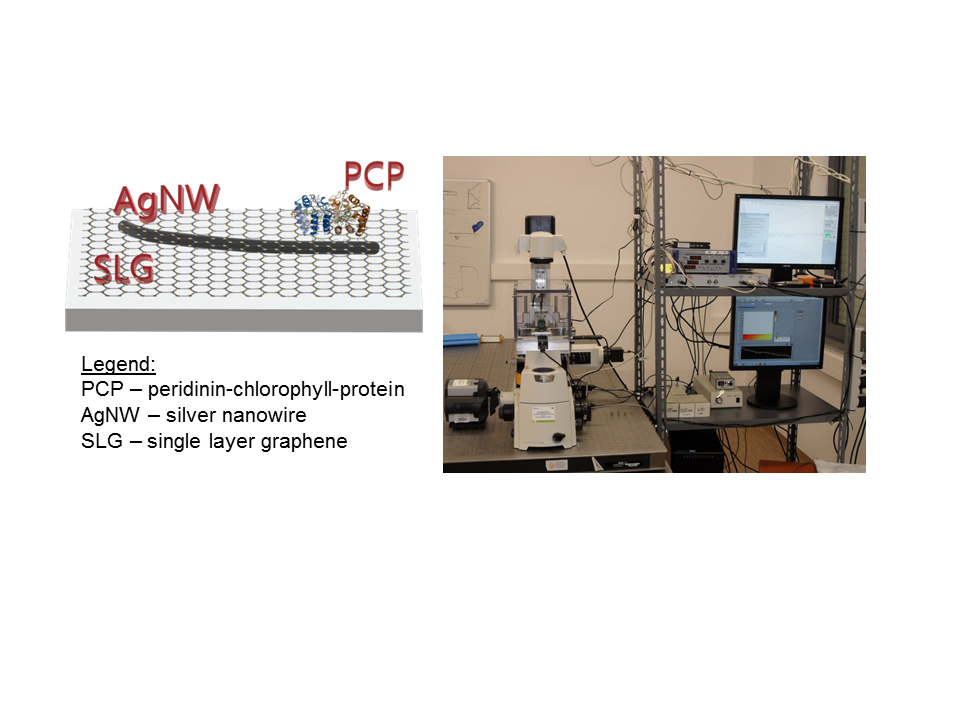
Metal-enhanced fluorescence (MEF) occurs in hybrid structures due to the presence of localized plasmon resonance in metallic nanoparticles. In this project we apply simple photosynthetic protein Peridinin-Chlorophyll-Protein (PCP) and Silver Nanowires (AgNWs) to construct a hybrid nanostructure with the conductive graphene layer (SLG) as the energy acceptor. The student will be involved in some steps of the hybrid structure fabrication including graphene transfer. The experiment will be focused on imaging of single PCP in the presence of an AgNW and/or SLG using wide-field and confocal fluorescence microscopy. The main aim of this experiment is to describe single PCP fluorescence intensity enhancement in the vicinity of a nanowire and the energy transfer from single PCP to SLG. The project aims at understanding the processes occurring in bio-inspired nanodevices.
^ ^ ^ ^ ^
Kinetic energy functional: the reverse engineering approach
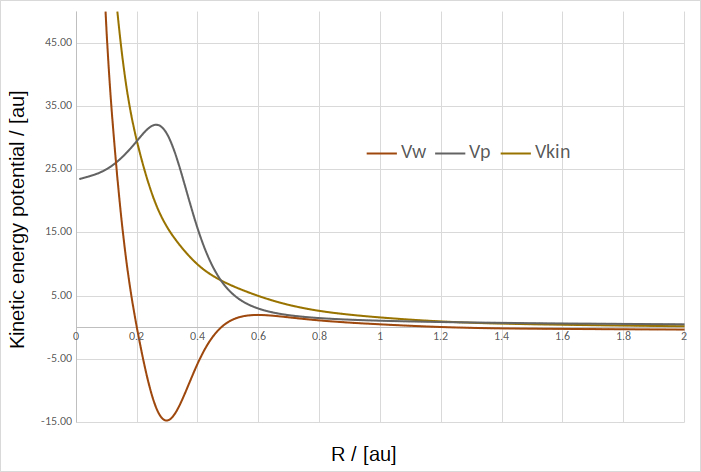
The Orbital-Free Density Functional Theory (OF-DFT ) is a powerful tool to investigate the properties of many-electron systems. In principle, the OF-DFT method scales linearly with the system's size allowing to perform simulations of large, complicated molecules, clusters, and almost all extended systems. Since the beginning of OF-DFT, the theory struggles with the lack of properly defined and accurate density-dependent kinetic energy (KE) functional and potentials which plays a crucial role in the solution of DFT Euler equation laying behind this theory. In general, the KE term may be decomposed into the von Weizsäcker part and so-called Pauli term including non-local effects. In the case of former, the exact analytical formula expressed in terms of electron density is known for many years. The unambiguous, density-dependent form of later still remains unknown. The Pauli term, however, can be expressed through Kohn-Sham orbitals and thus its spatial behavior might be analyzed using some more advanced methods such as optimized effective potential (OEP) method. The knowledge of spatial behavior of Pauli kinetic term is crucial for the construction of new density-dependent approximations of KE functionals.
The student will be involved mathematical analysis of the problem as well as the development of the new approximate form of KE functional which then will be applied in OF-DFT as well as subsystem DFT calculation. Potential candidates should have good mathematical skills, basic knowledge of quantum chemistry and be familiar with the Linux operating system.
| Supervisor: | Szymon Śmiga (szsmiga[at]fizyka.umk.pl) |
| Time: | June – July |
^ ^ ^ ^ ^
Mathematical properties of quantum dynamical maps
General evolution of quantum systems is described by a family of quantum channels, that is, completely positive and trace preserving maps (CPTP). One usually calls such family a quantum dynamical map since it does encode all dynamical properties of the quantum system. If the system is closed (isolated) the dynamical map is realized by the standard unitary evolution. It is no longer true for open quantum system. In this case the evolution is not unitary due to well known dissipation and decoherence phenomena. In the simplest scenario one considers dynamical maps governed by Markovian master equation giving rise to celebrated quantum dynamical semigroups. The idea of the project is to investigate mathematical properties of more general maps, that is, beyond Markovian semigroup. In particular it is interesting to analyzed such properties as divisibility. Intuitively it means that the map can be divided into a sequence of physical propagators. This mathematical property is related to monotonicity of several physical quantities like for example relative entropy and hance it closely related to the very concept of quantum Markovian evolution.
^ ^ ^ ^ ^
Optics of plasmonic nanostructures – towards highly integrated optoelectronic circuits
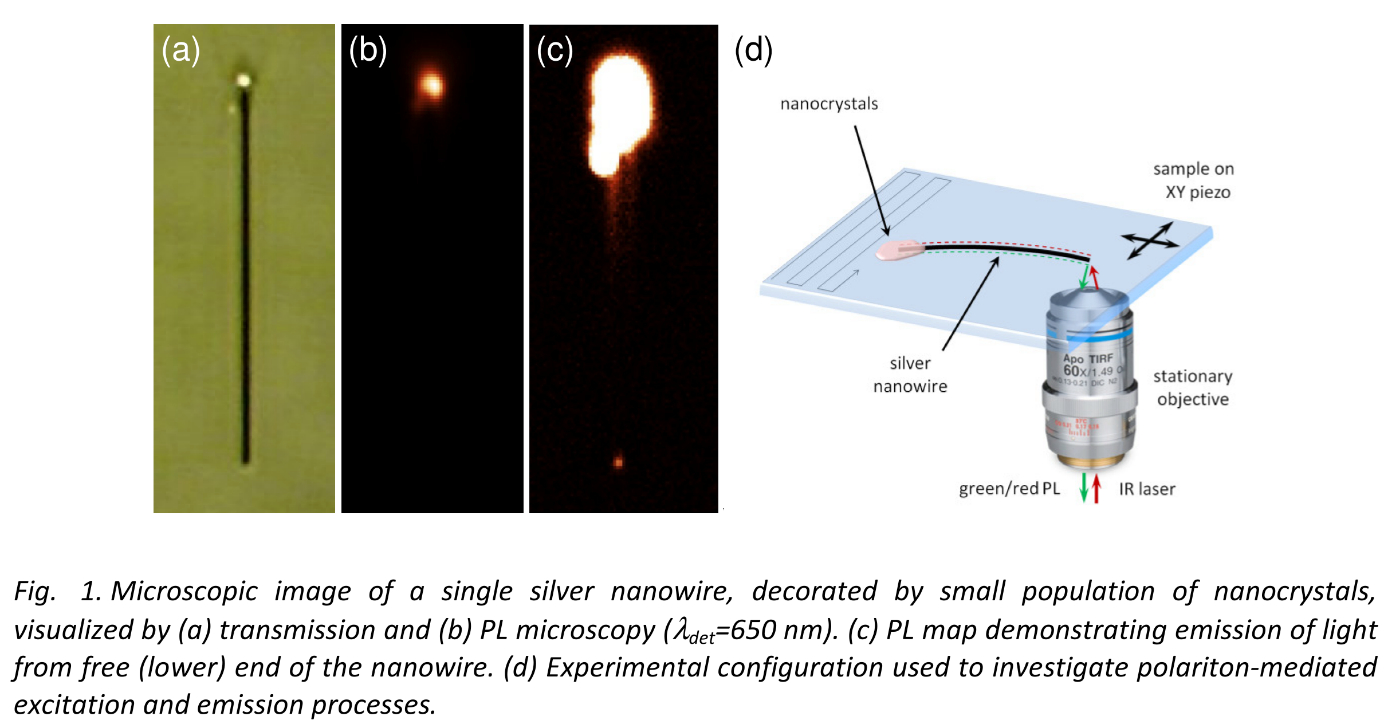
Optically active components based on metallic nanostructures are considered to be a promising alternative to typical optoelectronic circuits. Instead of silica waveguides, light can be transported through silver nanowires by polaritons – quasiparticles arising from the coupling between photons and oscillations of free electrons. Carefully selected long silver nanowires, locally decorated with nanocrystals, can operate as plasmonic modulators or amplifiers, suitable for processing information in such miniaturized optoelectronic devices.
The selected student will be involved in ongoing research concerning interactions between propagating polaritons and nearby nanocrystals. Innovative and very unique experiments will be performed using a custom-made two-objective fluorescence microscope, which enables to observe non-local, polariton-mediated processes [1]. Among specific effects we intend to focus on methods and techniques of generation and controlled propagation of plasmonic excitations, networks attenuation, sensitivity to polarization, polariton stimulated emission etc.
^ ^ ^ ^ ^
Positron annihilation lifetime spectroscopy
Positron annihilation lifetime spectroscopy (PALS) is a powerful tool for non-destructive study of microstructural changes in condensed matter. This experimental method allows quantifying the types and densities of defects in solids. Following the injection of positrons into a solid material, the positrons annihilate at a rate depending on the density of electrons near the injection site. If there are lattice vacancies or dislocation defects (voids) near the injection site, the positrons are attracted to these areas, which have lower electron densities and thus give rise to longer positron lifetimes. PALS is sensitive to the wide range of defect sizes and concentrations that are inaccessible for other spectroscopy methods such optical and electron transmission microscopy (TEM).
In this project the student will be involved in characterization of positron lifetimes for selected materials. The work will also include the search for correlation between obtained PALS results and other physical properties of materials under investigation.
| Supervisor: | Kamil Fedus (kamil[at]fizyka.umk.pl) |
| Time: | mid June – 22th July 2019 |
^ ^ ^ ^ ^
Purkinje Imaging of Accommodating Eyes In Vivo
Accommodation is the eye’s ability to change its optical power dynamically in order to maintain a focused image on the retina as the object distance varies. The eye accommodation processes are age-dependent and manifest mainly in the alterations of the crystalline lens. Despite intensive investigations, the mechanism of far-near accommodation in the eye is still a topic of debate, and different theories were developed over the last centuries. Nevertheless, the process of ocular accommodation is critical for understanding the mechanism of oculomotor functions.
The advent of modern imaging modalities has enabled in vivo characterization of the ocular shape changes during accommodation. One of the oldest modalities is Purkinje imaging, which is based on analysis of the reflections of the incident beam on anterior segment interfaces, i.e. air-anterior cornea (P I), posterior cornea (P II), anterior lens (P III) and posterior lens (P IV).
In this project, we would like to combine standard Purkinje imaging system with tunable lens technology to assess the performance of visualization of the 4th Purkinje image. High-speed spatial light modulator and polarization optics will be used to develop the microscope with vector beams. The student will be also involved in development and optimization of the experimental system. The student will also study and implement the algorithm to extract quantitative information on the crystalline lens from Purkinje images. We seek a motivated person with basic knowledge of optics and interest in bio-medical imaging (clinical applications). Skills in signal processing and programming are advantageous but not necessary.
^ ^ ^ ^ ^
Quantum chemical description of spectroscopic parameters of actinide cation-cation interaction-driven complexes
Actinide oxides (actinyls) can form small oligomeric or polymeric clusters that are known as cation–cation interactions (CCIs). In CCIs, the lone-pairs of the oxygen atom can act as an electron donor to the neighbouring actinyl with the actinide atom functioning as an electron acceptor. This clustering might facilitate structural changes and alter the spectroscopical properties of the bare actinyl moiety. Specifically, the CCIs might induce an irregular elongation of the actinide-oxygen bonds and asymmetry in the IR or Raman spectra. Unfortunately, the understanding of formation and stability of actinide CCI-driven species is still not very well understood. This poses a real challenge for improving and advancing separation technics of spent nuclear fuels. Since experimental manipulations with actinides are rather difficult (e.g., many oxidation states, radioactivity), theoretical modeling of actinide compounds becomes indispensable. Particularly helpful in understanding of actinide CCI-driven compounds is their quantum chemical description of electronic structures and associated spectroscopic properties.
The proposed research project will focus on the interactions between small model pentavalent and hexavalent uranyl and neptunyl CCI complexes in different structural rearrangements. Each complex will be characterized by the UV-Vis spectra, EPR-parameters as well as the Mössbauer and X-ray spectroscopy. Such in-depth analysis of uranyl- neptunyl CCI compounds will allow us to consolidate basic knowledge and will shed a new light on these mysterious interactions. The potential candidate should be highly motivated and have basic knowledge on quantum mechanics and Linux operating system.
| Supervisor: | Paweł Tecmer (ptecmer[at]fizyka.umk.pl) |
| Time: | August 2019 |
^ ^ ^ ^ ^
Quantum-mechanical modeling of core and core-valence properties of heavy-element compounds
Over the last decades, theoretical approaches have been successfully used to determine molecular properties and to provide a fundamental understanding of chemical reactivity and reaction mechanisms. Specifically, theoretical methods are particularly instructive when experimental studies of thermodynamics, kinetics, complexation, and reaction mechanisms are complicated due to, for instance, toxicity, radioactivity, and instability of chemical compounds. In this research project, we will model core and core-valence properties of compounds that contain one or more actinide atoms. The focus of this research project will be the theoretical description of various uranium oxide complexes, like small clusters of uranyl cations (UO2+), using state-of-the-art quantum chemistry methods. Like most heavy-element-containing molecules, such compounds are, in general, difficult to handle experimentally, primarily because of their radiotoxicity or instability. A theoretical description of such compounds, however, is also extremely difficult as we have to consider both relativistic and electron correlation effects on an equal footing. Furthermore, we will probe various environments and elucidate how the ligand surrounding affects molecular and spectroscopic properties. Whenever possible, the theoretically determined spectra will be compared to experimental results, which will allow us to assess the accuracy and reliability of our calculations for systems where experimental data is not available.
^ ^ ^ ^ ^
Quantum nanophotonics
Nanostructured materials allow one to shape spatial and spectral properties of electromagnetic fields in the optical domain. In particular, they offer unprecedented field confinement in localized hotspots and a corresponding enhancement by orders of magnitude. This project aims to study by theoretical means interactions of the confined fields with atomic systems positioned in such hotspots. Due to the extraordinary confinement new effects may appear, which are negligible in traditional cavities or free space.
Depending on the profile of the candidate, methods to be used include:
- analytical studies of selected quantum-optical models
or
- numerical simulations of optical response of nanoparticles for specific applications, based on classical Maxwell's equations.
^ ^ ^ ^ ^
Research on novel scintillator materials
The Scintillator and Phosphor Materials Spectroscopy Group is interested in radiative and nonradiative processes in insulators and semiconductors, particularly in rare-earth activated inorganic scintillators. The TAPS student will get an opportunity to meet and learn such experimental techniques as pulse height, radioluminescence, low temperature thermoluminescence, and scintillation time profile measurements. The acquired data will be analyzed in order to assess the potential of the studied material for scintillator applications. Although the group has at its disposal many samples of various scintillators, a possibility that a student brings his own samples may also be accepted.
^ ^ ^ ^ ^
Spectroscopy with high-finesse cavities
Cavity ring-down spectroscopy (CRDS) is one of the most sensitive spectroscopic techniques and has been recognized as an ideal tool for providing reference data for satellites monitoring the Earthís atmosphere and trace gas analysis. The use of a high-finesse optical cavity extends the optical pathlength to several kilometers (the cavity is about 1 meter long) and allows precise measurements of weak absorption spectra important in atmospheric studies (O2, CO, CO2, etc.). Recently developed in our group two novel techniques namely CMWS (cavity mode width spectroscopy) and CMDS (cavity mode dispersion spectroscopy) enables to overcome the limitations of the CRDS in the high absorption regime while retaining its precision and accuracy.
Depending on the willingness, skills and interests, participants may be involved in various activities such as:
- development of existing spectrometers,
- construction of a new spectrometer,
- development of the experimental control software,
- participation in measurements,
- data analysis including advanced spectral line shape models and multispectrum fitting technique.
^ ^ ^ ^ ^
The SPA Lab: Quantum information with single photons
Entanglement is a basic block of quantum communication and computation protocols. In practice, the entanglement can be produced by means of the parametric down-conversion process where one photon decays into a pair of photons. The purely quantum mechanical features of a photon pair in conjunction with novel detection techniques can be used to enhance the quantum communication protocols. The student will work on experiment and/or theory of a new quantum communication protocol based on time resolved single photon detection techniques. This will be a chance to gain experience in working with the state-of-the-art superconducting single photon detectors, single photon sources, and data acquisition and analysis systems.
^ ^ ^ ^ ^
Turning the ab initio DFT into the blackbox problem
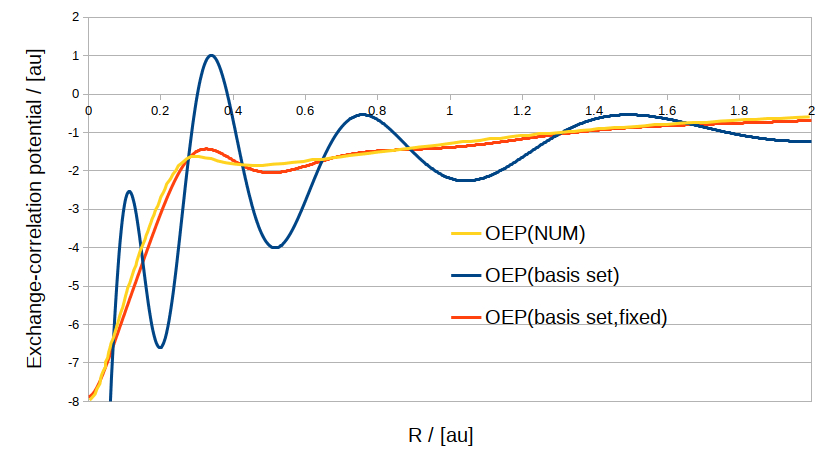
The ab initio density functional theory (DFT) provides one of the most effective tools to develop exact exchange-correlation (XC) potentials and functionals within the Kohn-Sham (KS) DFT (KS-DFT) framework. Alike in the wave function theory, the ab initio DFT framework offers the recipe to construct the aforementioned quantities in a hierarchical fashion with a systematic route towards the full configuration interaction electronic wave function. One of the most problematic features of ab initio DFT is the solution of integral Fredhold equation of I kind which produces the local exchange-correlation potential for a given orbital-dependent functional within, so-called, optimized effective potential method (OEP). Unfortunately, numerical solution is only possible for small systems which exhibit spherical symmetry. In general applications of OEP method, for any other system, the Fredholm equations are projected into the finite space spanned by M-dimensional auxiliary basis set. This turns the solution of Fredholm equation into the algebraic problem which may be solved, on the first glance, much easier. Sadly, this transformation rises much more question than it answers. For example, how to choose the auxiliary basis set to be sure that it spans the response matrix and XC potential properly. Improper selection of auxiliary basis set leads to the unphysical oscillatory behavior of XC potential in the inner-valence and core regions which might cause a problem with convergence of OEP equation.
During the summer project we would like to lean over this problem, basically to find a mathematical procedure to obtain smooth XC potential by removing or reducing the unwanted oscillations. We will try to solve this problem by utilization of some basic mathematical concepts related to the solution of algebraic equations as well as some advanced techniques such as machine learning.
Potential candidates should have good mathematical skills, basic knowledge of quantum chemistry and be familiar with the Linux operating system.
| Supervisor: | Szymon Śmiga (szsmiga[at]fizyka.umk.pl) |
| Time: | June – July |
^ ^ ^ ^ ^
Ultrasensitive Optical Probing of Elastic Properties of Ocular Structures
The human eye is a complex and dynamic optical structure enabling visual perception, i.e. conversion of light into electrical signals that are later processed by the brain. In clinical practice, imaging of the anterior segment of the eye has been traditionally carried out with slit lamp biomicroscopy. However, anterior segment imaging is currently a rapidly advancing field of ophthalmology and provides tools that supplement well-established modalities like ultrasound biomicroscopy, confocal microscopy, Scheimpflug imaging, corneal topography etc. Another field of intensive studies includes extraction and probing of visco-elastic properties of the ocular structures. This technique, known as elastography, is based on the measurement of the tissue displacement due to its mechanical loading (stress).
Ophthalmic elastography is the foundation of diagnosis and management of ocular diseases such as keratoconus, and enables proper planning of the surgical manipulations (e. g. LASIK). Additionally, expanding knowledge about ocular biomechanics is extremely important for the advances in the reliable evaluation of the intraocular pressure, thus for more effective management of the glaucoma.
In this project, we develop interferometric technology for vibration detection. The student will assess feasibility of the ultrasensitive method of measurement of the reaction of ocular structures to mechanical excitation. We seek a motivated student with basic knowledge of optics and interferometry. Skills in signal processing and programming are advantageous.
^ ^ ^ ^ ^
Ultra-stable laser for optical atomic clocks
Optical atomic clocks with neutral cold atoms allows for absolute precision on the order of 10^-18, unmatched by any other device. During the internship student will be involved in CASTLE group (http://fizyka.umk.pl/~castle/) activities. They cover design of an active optical clock, construction of an ultra-stable laser for strontium atomic clock, and improvements of existing cold atom setups. Other possible topics for the internship are related to search of dark matter with atomic clocks and studies of fundamental physics with atom-light interaction.
| Supervisor: | Marcin Bober (bober[at]fizyka.umk.pl) |
| Time: | mid June - July |
^ ^ ^ ^ ^











